May 29, 2025 | 16:21 GMT +7
May 29, 2025 | 16:21 GMT +7
Hotline: 0913.378.918
May 29, 2025 | 16:21 GMT +7
Hotline: 0913.378.918
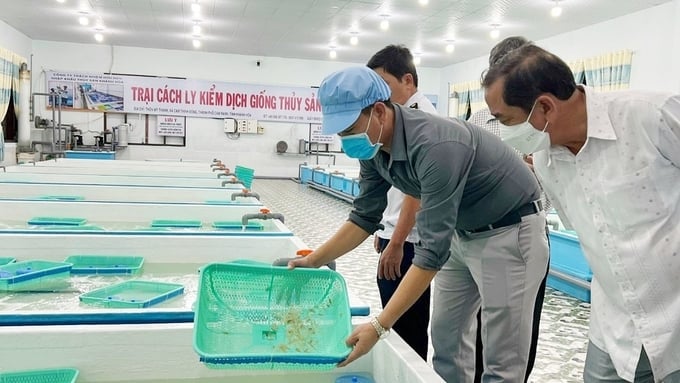
Inspection of the lobster breeding stock.
Scheduled for November 15, 2023, the Ministry of Agriculture and Rural Development will host the Forum on "State of Breeding Stock, Feed, and Aquaculture Supplies; Tracing Product Origin and Sustainable Development Solutions for Vietnam's Aquaculture" in Nha Trang city, Khanh Hoa province.
Forum Agenda: Management of lobster breeding stock, sustainable lobster farming solutions; Tracing the origin of lobsters and aquaculture products to meet market demands; Control of imported aquaculture breeding stock; Research and production of industrial feed, various supplies for aquaculture; the state of the seafood market at year-end and projected outlook for 2024.
According to the Directorate of Fisheries under the Ministry of Agriculture and Rural Development, the lobster farming industry in Vietnam is concentrated in five provinces from Binh Dinh to Binh Thuan with over 179,000 farming cages, totaling an annual output of over 3,250 tons. Notably, the provinces of Phu Yen and Khanh Hoa are considered the "hubs" for lobster farming, accounting for 95% of the cages and farming output.
The lobster farming industry in these two provinces has become a pivotal aquaculture sector and a crucial economic contributor that significantly impacts the socio-economic sphere by providing stable employment and increased income for coastal residents.
Mr. Nguyen Anh Tuan, an experienced lobster farmer from Binh Ba Dong hamlet, Cam Binh commune, Cam Ranh city, Khanh Hoa province, revealed that the community primarily farms two types of lobsters: blue and spiny lobsters. Due to the lack of artificially bred lobster, local farmers rely heavily on natural exploitation and imports. However, with the rapid depletion of naturally occurring breeds in recent years, the community predominantly relies on imported breeding stock.
"When the supply of imported breeding stock is abundant, their price may range from 20,000 to 30,000 Vietnamese dong per lobster. However, when the supply of imported breeding stock is scarce between October and January, the price can rise to 50,000 to 60,000 Vietnamese dong per lobster. The price for spiny lobster breeding stock is typically four times higher than that of blue lobsters, fluctuating between 100,000 and 110,000 Vietnamese dong per head. Presently, the Chinese market is limiting its import of spiny lobsters. As a result, local farmers have stopped farming this lobster variety, causing the price of breeding stock to drop to as low as 30,000 Vietnamese dong per head," shared Mr. Tuan.
According to lobster farmers in Khanh Hoa province, farmers typically release 500 blue lobster breeding stock in a sixteen-square-meter farming cage. After eight months, approximately 300 to 350 lobsters survive, indicating a loss rate of 30-35%.
Spiny lobster farming, on the other hand, experiences significantly higher loss rates. For every cage of 120 lobsters, only 50% of the released breeding stock can survive after a twelve-month period. Due to extensive losses and market difficulties, farmers in Cam Ranh Gulf have reduced the scale of spiny lobster farming. However, the majority of farmers in Van Phong Gulf, Van Ninh district, Khanh Hoa province, continue to release this variety of lobster.
Song Cau town is a key lobster farming area in Phu Yen province, with over 80,000 commercial and breeding cages for lobsters.
Farmers in Song Cau town have recently transitioned to blue lobster farming due to their shorter rearing time, typically ranging from eight to ten months before harvest. In contrast, spiny lobster farming requires between twelve and eightteen months before harvest, thereby carrying higher risks.
Mr. Doan Van Quang, Director of the Lobster Comprehensive Service Cooperative in Song Cau town, Phu Yen province, reported that local farmers primarily rear lobsters using imported breeding stock. Due to the recent disruption in the supply of imported breeding stock, a considerable number of farmers have left their cages unoccupied. Moreover, the loss rate of breeding stock is exceptionally high, reaching up to 50%.

According to Mr. Quang, farmers release around 500 lobster breeding stocks in a three-square-meter pond.
"Farmers release around 500 breeding lobsters in a three-square-meter pond, which will decline to only 250 to 300 lobsters over time. On the other hand, when farmers release 300 breeding lobsters in a nine-square-meter cage, only 200 to 220 can survive until the time of sale," shared Mr. Quang.
According to the Directorate of Fisheries, the annual demand for breeding stock in the South Central Coast ranges from 80 to 90 million lobsters of various types. Notably, 80% of spiny lobster breeding stock and 100% of blue lobster breeding stock are imported from the Philippines, Indonesia, Myanmar, Sri Lanka, and Singapore.
Data from field surveys have demonstrated a disparity in lobster quality: a number of lobster shipments exhibited excellent survival rate, whereas some exhibited diminished survival rates and stunted growth, resulting in loss rates ranging from 30% to 70%. The high loss rates can be attributed to the delayed acclimatization of imported lobsters to the Vietnamese environment or the prolonged transportation process, resulting in reduced survivability and stunted growth.
Additionally, during the surveillance, quarantine, and health examination of imported lobster breeding stock conducted by the Region IV's Sub-department of Animal Health under the Department of Animal Health between June 21 and June 30, five lobster shipments originating from three importing companies, comprising a cumulative total of nearly 1.4 million lobsters imported from Malaysia, were found to be contaminated with the white spot disease virus.

The inspection of the transportation and trade of lobster breeding stock into Vietnam must be further enhanced.
With the aim of preventing imports of diseased lobster breeding stock into Vietnam, the Region IV's Sub-department of Animal Health has recommended the Department of Animal Health to temporarily halt the issuance of permits for imports of lobster breeding stock from countries with shipments infected with white spot disease.
On the other hand, the Sub-Department have issued correspondence to the local governments in exporting countries to request information on the inspection procedures for exported lobster breeding stock and a commitment to ensure that all batches of exported lobster breeding stock to Vietnam are disease-safe. Additionally, the unit has recommend companies to refrain from importing lobster breeding stock from suppliers and partners whose shipments have tested positive for the white spot disease.
Moreover, reports from the public and businesses highlight the prevalent and complex issue of unauthorized transportation and trade of foreign lobster breeding stock into Vietnam via both road and air routes.
Upon receiving these reports, the Ministry of Agriculture and Rural Development issued Document No. 6361 dated September 11, 2023 concerning the prevention of smuggling, trading, and transportation of lobster breeding stock.
Following this directive, Phu Yen and Khanh Hoa provinces have reinforced inspection efforts and adopted strict measures against the unauthorized transportation and trade of lobster breeding stock into Vietnam and uncertified lobster breeding stock in the market.
According to local governments, lobsters contribute an average revenue of 1,500 - 2,000 billion Vietnamese dong annually. In addition, the annual demand for lobster breeding stock among farmers is substantial. As a result, controlling the source of lobster breeding stock is a vital factor for the sustainable development of lobster farming. Transparent origins of lobster breeding stock will reduce losses for farmers and serve as the basis for establishing a formalized lobster export chain.
Mr. Nguyen Tri Phuong, Deputy Director of the Phu Yen province's Department of Agriculture and Rural Development, reported that the province has over 112,000 lobster farming cages covering a water surface area of approximately 1,650 hectares. The province has an annual demand for approximately 22 to 25 million white lobsters; 390,000 of which are naturally sourced, and the remaining are imported breeding stock.
Khanh Hoa province has an annual demand for approximately 55 to 60 million white lobsters. The naturally sourced lobster breeding stock from local coastal areas only meets 15% to 20% of the annual demand; the remaining amount is purchased from neighboring provinces such as Binh Dinh, Phu Yen, Ninh Thuan, Quang Ngai, Quang Nam, or imported from Indonesia, the Philippines, and Singapore. Ninh Thuan province has an annual demand for approximately 1.5 to 2 million white lobsters for commercial farming.
Translated by Nguyen Hai Long
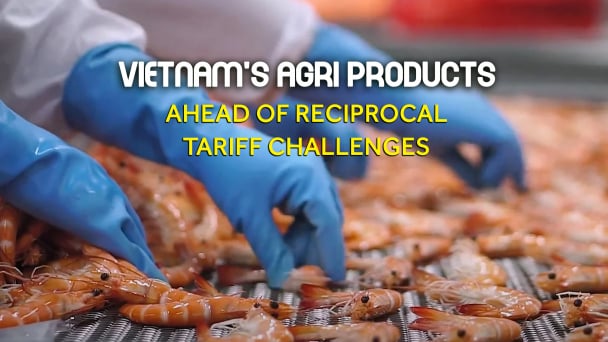
(VAN) Vietnamese shrimp exporters are actively looking for alternative markets and accelerating shipments to the United States in response to the pressure of impending reciprocal tariffs. This is occurring during a temporary tariff suspension.
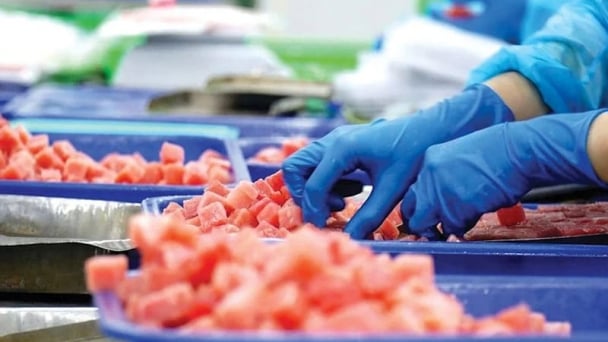
(VAN) The import-export turnover between Vietnam and Singapore rose amid a trade rebound, with machinery, electrical equipment, and fuels making up the majority of the transaction value.

(VAN) Director General of the General Administration of Customs of China, Ms. Sun Mai Jun, has pledged to implement measures that will ease the import process for Vietnamese agricultural products.
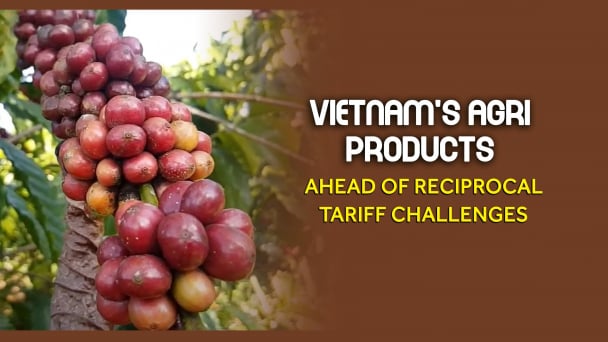
(VAN) Although Vietnam is still increasing its coffee exports, the industry is currently in the process of determining market strategies in response to the U.S. imposition of reciprocal tariffs.

(VAN) With rising demand in Muslim-majority countries, Halal certification is becoming a critical passport for Vietnamese agricultural products seeking sustainable market access and consumer trust in the Middle East and Africa.

(VAN) Vietnam’s fruit and vegetable exports to the U.S. are rising sharply, and exporters are hoping that any upcoming reciprocal tariffs will be set at manageable levels.
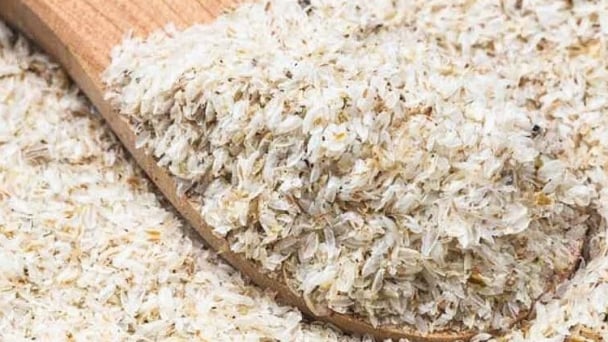
(VAN) Despite meeting quality standards, Vietnamese rice bran exporters still face difficulties with administrative procedures under the new protocol.